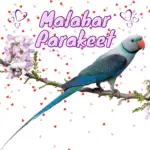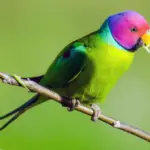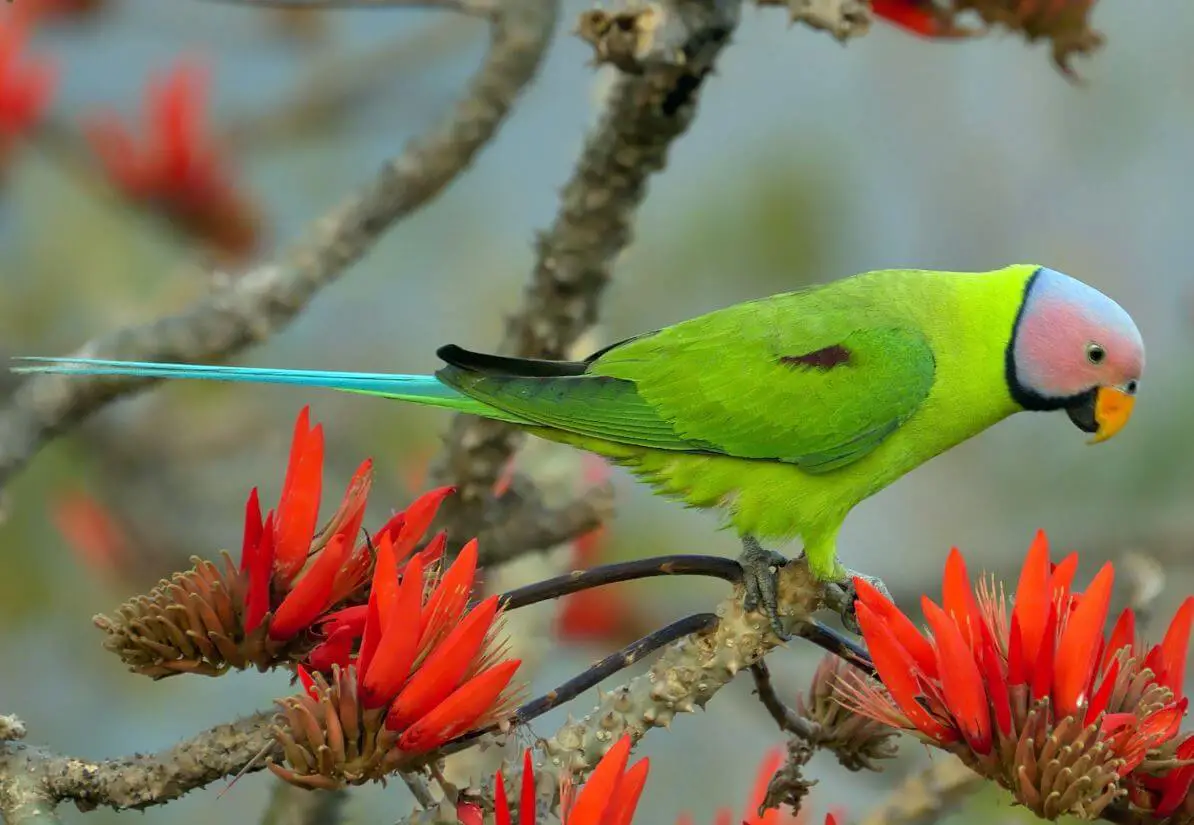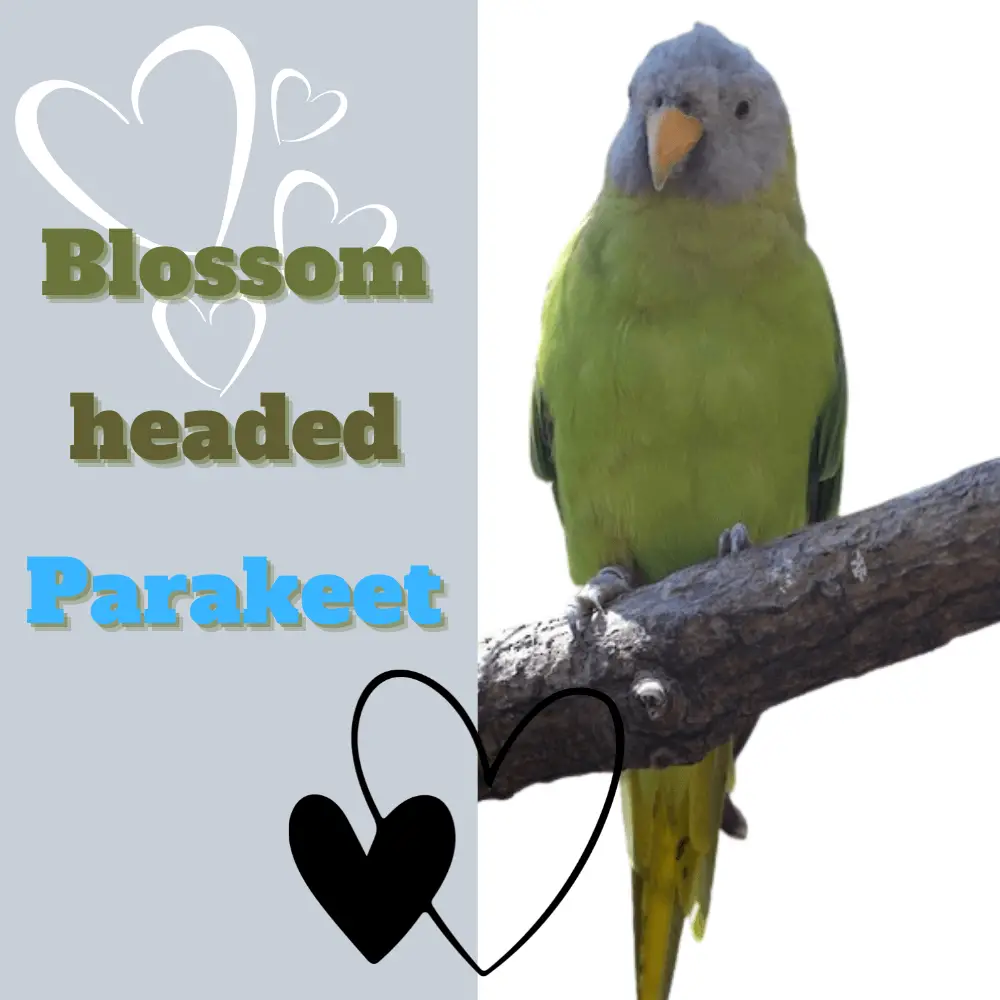
Blossom headed Parakeet 30–36 cm. Very similar to P. cyanocephala but has forecrown, cheeks and ear-coverts rosy pink hind crown to ear-coverts bluish lilac, back, and rump green, no bluish-green band bordering black collar-line, underwing-coverts green not bluish-green, tail shorter with tips of central feathers pale yellow.
The Blossom headed Parakeet Female has a dull bluish-grey head, a variable yellow collar. Immature has a green head. Race juneae generally yellower, with larger red wing-patch.
Systematics History
Editor’s Note: This article requires further editing work to merge existing content into the appropriate Subspecies sections. Please bear with us while this update takes place.
Formerly considered conspecific with P. cyanocephala, where was often erroneously listed as P. c. rosa. Two subspecies were recognized.
Subspecies
Psittacula roseata roseata Scientific name definitions
P. r. roseata+1
Distribution
Psittacula roseata juneae Scientific name definitions
P. r. juneae+1
Distribution
Distribution
Editor’s Note: Additional distribution information for this taxon can be found in the ‘Subspecies’ article above. In the future, we will develop a range-wide distribution article.
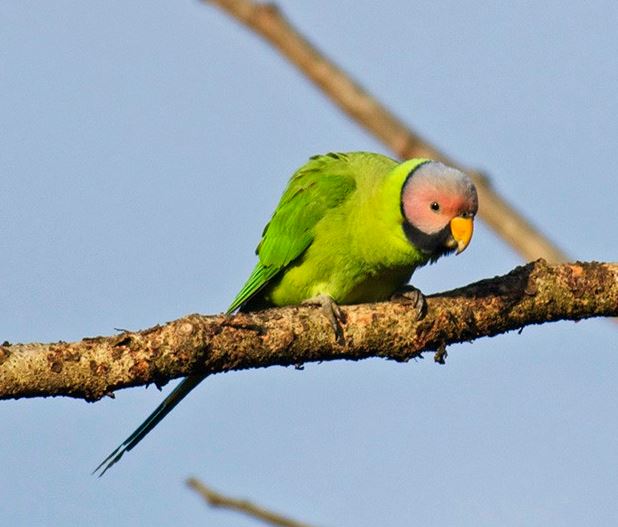
Habitat
Well-wooded country, open forest, and the edges of cultivated clearings, to at least 1000 m.
Movement
Local seasonal movements were reported in SW Myanmar, where Blossom headed Parakeet common in Mar-Apr, otherwise scarce.
SOURCE: WildFilmsIndia
Sounds and Vocal Behavior
The commonest vocalization Blossom headed Parakeet is a short strident slurred whistle, “krreE!”. When perched, utters a wider variety of rather shrill or grating screeches, and short chime-like metallic notes, often in short semi-musical phrases.
Breeding
Late Feb–Apr in Myanmar; nestlings and juveniles for sale Mar-May in Thailand indicate a rather long season. Nest reportedly as in P. cyanocephala, but holes in old walls and ruins also used.
Blossom headed Parakeet Eggs white, size 24·1–26·7 mm × 21–21·3 mm (nominate) or 24·2–24·6 mm × 20–21·6 mm (juneae). Nestling period, in captivity, c. 6 weeks.
Conservation Status
Not globally threatened. Currently considered Near Threatened. CITES II. Apparently abundant in Myanmar around 1900, but now much reduced in numbers, though status better than in Thailand,
where habitat loss, trade, and general persecution of Psittacula parrots as pests have caused the Blossom headed Parakeet to become uncommon or rare.
International trade records showed 836 birds exported in period 1981–1985, but 6873 in period 1986–1990, chiefly from Vietnam and Thailand, causing concern that local populations may have been affected adversely; around 1930 the Blossom headed Parakeet was considered nowhere common in Indochina.

